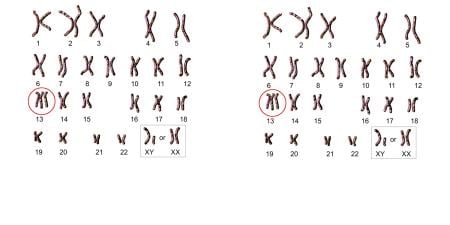Case
Mrs. Jones is an 82-year-old nursing home resident with a longstanding history of heart failure, who is now hospitalized in the cardiac ICU for the third time this year. She is a retired teacher, with 4 children and 8 grandchildren. She did not list a religious preference when admitted to the hospital. The attending cardiologist, Dr. Rosenberg, is a heart failure specialist, and is an active member of an Orthodox Jewish congregation.
On day 3 of her hospitalization, Mrs. Jones developed a fever, which was subsequently determined to be caused by a MRSA line infection from a venous catheter. On day 4, her renal function began steadily deteriorating, until her serum potassium reached dangerous levels.
She has been unconscious for 2 days, and, according to hospital records and her children, she has no advance directives to guide end-of-life care. Dr. Rosenberg requests a family conference with Mrs. Jones's children (her husband is deceased) to discuss their mother's prognosis and the appropriate next steps in treatment.
"I'm afraid that your mother's health is steadily deteriorating," Dr. Rosenberg tells Mrs. Jones's family. "She has a serious infection that has failed to respond to traditional antibiotics."
"How did she get this infection, doctor?" Mrs. Jones's daughter Jennifer asks.
"That's a good question. It's likely the result of an IV line we placed during her admission," Dr. Rosenberg replies. "Your mother's infection is caused by a resistant strain of staphylococcus that is common in intensive care units and hospitals, but we have more aggressive antibiotics we can use. I should also tell you that her kidneys are failing, and we'll need to begin dialysis to ensure that her electrolytes and fluid status are kept at normal levels. Despite this, I think there's a strong possibility she'll pull through."
At this point, Mrs. Jones's eldest son Franklin interrupts. "Look, doctor," he says, "My cousin was on dialysis for years, and, until he died, he was really miserable. I don't want my mom to have to go through that at this age. I think enough is enough. She's been in the hospital 3 times this year alone."
"I understand your concern," Dr. Rosenberg says, "but you should realize that your mother may not require long-term dialysis. Her kidneys may recover, but at this stage, dialysis is the only solution left to correct her electrolyte imbalances. If we don't lower her potassium, she'll likely develop a fatal arrhythmia."
Franklin looks at the rest of the family, who are shaking their heads. "Honestly, I think you shouldn't treat her any further. Even if it's not permanent, starting dialysis just isn't a path we want her to start on. And the 'aggressive antibiotics'—I don't see any reason to pour more substances into her already tired body. It's obviously her time to go. Can't you just give her something to make her comfortable?"
Dr. Rosenberg pauses for a moment and then tells Franklin. "We fully intend to keep her comfortable and continue treating her pain. As you know, I'm committed to doing what's best for your mother. But in good conscience, I can't stop treating your mother as long as there are reasonable courses of action that I could take to preserve her life. According to the principles that guide my practice of medicine, I cannot withhold life-saving treatment from any patient—especially antibiotic therapy and temporary dialysis, both treatments with uncontroversial efficacy."
Commentary 4
As a physician and a philosopher raised in the Buddhist way of life our thoughts are as follows:
When life begins and the precise point of its termination have been subjects of much debate and ethical concern these days. In Buddhism, life begins not at the point of birth, but in the act of copulation successfully accomplished. The fetus however incomplete is viewed as life in posse, in the most ample sense of that term. There is no difference in the gradually unfolding life processes and their potential, and the achieved fact. One leads to the other. Consciousness is part of the potential.
In relation to this particular patient, the larger Buddhist idea of karma also comes into play. In Buddhism, karma is not action per-se but the thought (cetana), which is the parent of all actions, good or bad. The baby that has achieved birth, is a product of a positive wholesome thought the parents entertained. Considering all of the above, there is a sanctity attached to all living beings, be they human or animals or even microscopic organisms, which according to Buddhism have a right to live, regardless of scientific taxonomies about single, multiple, or complex order of cells in life forms. A number of implications follow. First that all life is, to use a religious word, sacred, and worthy of respect. Much as each one of us is a member of a family, according to Buddhism each person is a separate individual in terms of previous karmic conditioning. Secondly, given the intrinsic sanctity of life and the implications that follow, nobody has the right to take away life, since karmically each person's life is his own. It follows that third parties, whether they are friends or family of a person who is gravely ill, must exercise great ethical care in coming to a decision. Ideally, in ancient societies and until recent times, what we call life, namely the natural progression and degeneration of any organism, took as it were a preordained course. Death was a natural expectation in traditional premodern cultures, east or west, accepted with commendable fortitude and grace. We wish to emphasize that in this age of spellbinding medical technologies and their potential, it is easy to forget that death is a natural eventuality which has traditionally been accepted by the dying person as well as by the family, relations, and friends. In eastern religious philosophies as well as in medieval Christian Europe before modernization, the process of life itself was a calibrated preparation for death. A famous Christian saying in medieval time was "Memento Mori," remember that you must die.
These 2 emerging elements seem to be paradoxical. First, there is the natural inclination of all organisms toward the perpetuation of life and, secondly, the acceptance of death as a natural process.
How does all this affect the choice we have at hand—whether to artificially prolong the life of a sick person by modern methods or to let nature take its course?
In many cultures this would be a new question, calling for redefinition of existing religio-cultural norms. It puts a grave burden of enormous ethical implications on those who have the responsibility of coming to this difficult decision. For a relative at the bedside to decide that life support systems should be discontinued is, in terms of Buddhism, an arbitrary and ethically indefensible position. The idea that by doing so, we end the prolongation of suffering is subjective and is not altogether a scientifically defensible position. In this particular case and in recent cases highlighted by the media, there seems to be a sharp division in professional opinion among those who have the competence to come to some form of judgment. Indeed, from a Buddhist point of view the resolve to terminate life is a paradoxical, violent act of taking away someone's life, especially when that person is a human being.
In Buddhism, to be born a human person without the debit of physical or mental handicap, is a privilege which should not be taken for granted. As a result of negative karma, a being may be born in cosmic worlds of woe, in situations of limbo, or as an animal, conditions which the being concerned has no power to alter or abbreviate until the karmic force is expended. There are 2 reasons why great value is placed on the human condition and its potentialities. First it is only as human beings that we can fully understand the central problem of dukkha, or suffering, in all its deep existential dimensions. Secondly, it is only in the human condition that we can work out our salvation to end suffering and achieve nirvanic transcendence to break the cycle of birth, and death, and birth again, in an endless, remorseless samsaric round.
In a finely balanced conundrum such as this, the better ethical decision might be to continue with life support systems until nature takes its course. By our phrase "nature takes its course," we mean the natural end of the patient's karmic continuity force. In fact what rationally seems to be a matter of decisions is, one way or another, a reflection on how karma works. The very people who take these decisions are, unbeknown to themselves, agents of karma, according to Buddhism. Logically in the Buddhist paradigm, those who take such decisions create karma for themselves.
The difficulty here is one of trying to integrate 2 virtually incongruent worldviews into a single meaningful synthesis or paradigm. For example, in a natural Buddhist context the dying person, as a result of a lifetime habituation, accepts death as a part of the process of the volatility and impermanence of all things. Life support technologies in themselves cannot be blamed or thought to be the key player in dramas of this nature. The key players are those who consciously, deliberately, and volitionally take decisions one way or other. Compassion in Buddhism is naturally associated with the support and perpetuation of life organisms, conditioned, of course, by the impermanence of all things. In no way can it be argued from a Buddhist perspective that taking the decision to withhold treatment is somehow deeply ethical or compassionate and is in the best interest of the patient.



